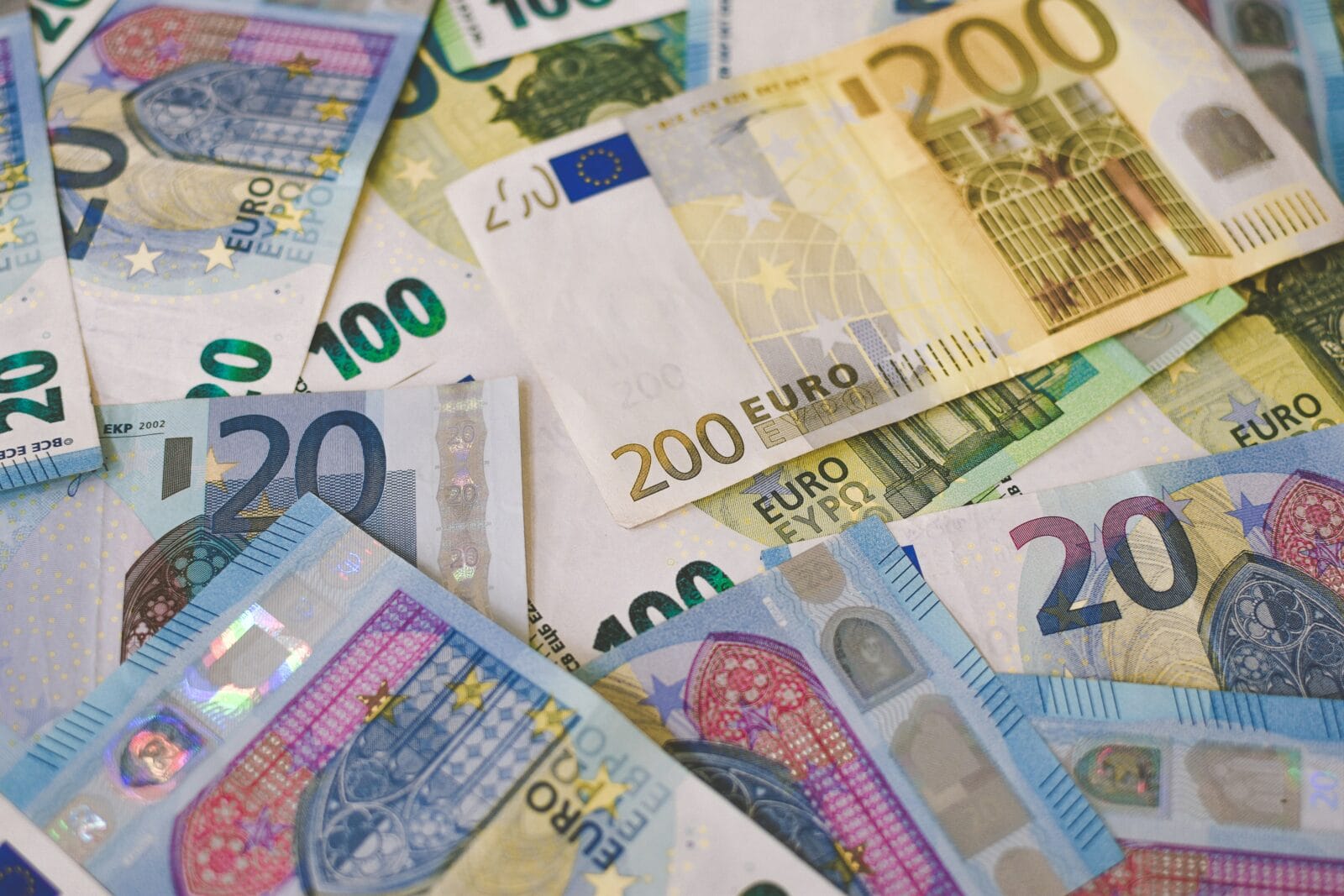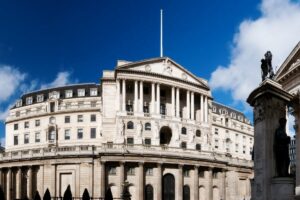So now we know. The ECB has just announced that it has cut its deposit rate by 0.25% from 4% to 3.75% – beating both the Fed and the Bank of England in starting the rate cutting cycle.
Financial markets had been widely expecting the ECB to cut rates today although there had been some earlier concerns among borrowers that the ECB might keep rates on hold after data showed Eurozone inflation rose to 2.6% in May from 2.4% in April.
Will today’s move spur on the Fed? What about the Bank of England? With Central Bankers always having a keen eye on divergence, today’s decision, following a cut by the Bank of Canada yesterday, will give food for thought. And what does it mean for investment decisions and asset allocation?
Investment and economics experts have been commenting on today’s ECB interest news as follows:
Helen Vieira, Head of Banks at Flagstone International, also comments on the ECB’s decision to cut interest rates saying:
“The ECB decision to trim interest rates to 3.75% signals its belief that we have reached the summit of inflation and that we are now descending towards a new normal. The rate has sat at 4% since September 2023 in order to curb inflation. However, concerns have been growing that this has left the Eurozone economy labouring uphill and in danger of losing ground.
This move is designed to foster greater economic stability and growth. While that may bring a sense of relief among central bankers, for businesses and householders across the Eurozone that will be tempered with some trepidation.
“As any good mountaineer will tell you, its no good reaching the summit of a mountain if you don’t descend safely. That is the challenge now facing all the G7 central bankers. How can they guide their respective economies to a level that keeps inflation in check, provides relief to beleaguered households and stimulates economic growth sufficiently?.
“The ECB has followed Canada’s first steps earlier this week in deciding it was time to start trimming rates and the expectation is the US and the UK will join that journey by the end of this year. However, each will move at its own pace.
“For those managing cash deposits that means we may see rates offered on cash start to tick down across many jurisdictions. That it makes it even more important to stay aware, and ready, to take advantage of the best returns across the world.”
Commenting on the interest rate decision, Lindsay James, investment strategist at Quilter Investors said: “The starting gun has been fired and the European Central Bank is the first out of the major three banks to start cutting rates. This is a significant move given it is the first rate cut from the ECB in five years, and ends what has been one of the most aggressive and swift rate hiking cycles in modern times.
“Importantly, this is not likely to be a single cut and done for a while, with signals suggesting a further cut or two are on the horizon this year as inflation has subsided. The ECB has stolen a march on the Bank of England and Federal Reserve – who are both potentially still a few months away from cutting – and will breathe life into an economy that desperately needs some form of stimulus.
“While this news was well expected, it will no doubt provide relief to consumers and businesses on the continent. Ever since Russia’s invasion of Ukraine, Europe has struggled to combat the economic shock this produced, but signs are now improving, although uneven across the continent. While inflation has ticked up in recent months, the economic recovery is beginning to play out. This puts the ECB in a good position to cut further into a slowly improving picture, although the messaging is likely to remain restrained and cautious. As such, there may be some pauses on the way back down for rates in order to limit the scope of any divergence with the Federal Reserve.
“This move also focuses eyes on the BoE, who will make its decision in a couple of weeks. The major central banks will not want to diverge too far from one another, and with political risk being ratcheted up, they also won’t want to be seen as too influential.”
Commenting on today’s ECB decision, Salman Ahmed, Global Head of Macro and Strategic Asset Allocation at Fidelity International, said: “As was widely expected, the European Central Bank (ECB) kickstarted its rate cutting cycle by reducing policy rates by 25 basis points. The Governing council justified the moderation in the degree of policy restriction based on increased confidence of the disinflation process and the strength of the monetary transmission. The staff projections for growth were revised higher by 30 basis points for 2024, which is in line with the green shoots we have been noting in our proprietary trackers since the start of the year, however overall growth remains below trend. Inflation projections were also revised higher for 2024 and 2025, although importantly, projections for 2026 remained unchanged within target.
“However, the statement refrained from pre-committing to any future cuts and maintained a data-dependent stance. Recent upside surprises on wages and inflation are likely to keep the council members on the cautious side. As such, a July cut looks clearly off the table. The rate trajectory of the ECB will depend on the evolution of data from here on and the Fed, which we think will be unable to cut this year given the stickiness in US inflation.”
Des Lawrence, Senior Investment Strategist at State Street Global Advisors, reacts to today’s ECB interest rate decision saying: “The move was well signalled and markets are more focused on indications on the number and timing of further rate cuts between now and year end. President Lagarde will want to strike a balance that tempers excessive rate cutting expectations seen earlier this year but also acknowledging the ongoing restrictive policy stance and transmission effects.
“Although inflation expectations remain quite well anchored, recent hard data has not been entirely helpful to those of a more dovish persuasion – early estimates for the month of May showed inflation increasing by more than forecast by markets. Admittedly this is just one datapoint and it won’t jeopardise the overall direction of travel for the central bank. Nevertheless, it does remind markets that the last leg of the disinflation journey can be the most difficult – services price inflation is still running at an annual rate of just over 4%.
“The ECB would like to have greater confidence that inflation is converging sustainably towards target as it embarks on rate cuts. It looks like it may take a little longer for that confidence to increase sufficiently to allow it to relax policy further. The ECB’s latest macroeconomic forecasts are also being published today and will be closely scrutinised for any significant changes in key projections. We may be entering a holding phase in the coming months but we do expect further policy easing by year end assuming the disinflation trend continues as we expect.“
Ben Nichols, Interim Managing Director of RAW Capital Partners, said: “The ECB’s decision will resonate with consumers and investors not just in the EU, but globally. While the impact of the cut is unlikely to be felt immediately, the move adds to the growing feeling that the global economy has turned a corner, and should provide some impetus to the Eurozone’s business investment, consumer spending and housing markets. We could also see investor sentiment experience something of an uptick in the aftermath of this decision, which could instigate a pick-up in global trade and investment.
“However, the risk remains that the ECB is cutting rates too early, and it will be intriguing to see if the US Federal Reserve and Bank of England follow suit in the coming months. The outlook for energy prices is unreliable and geopolitical conflict in Europe and the Middle East could create major challenges further down the line. What’s more, the Eurozone’s labour market remains surprisingly strong. Therefore, a rekindling of inflationary pressures remains a significant risk factor if the bank cuts rates too quickly.
“As a result, investors must watch on with keen interest. The challenge remains ensuring that portfolios can withstand any turbulence that arises from central banks’ interest rates decisions by diversifying across a range of uncorrelated asset classes, territories and sectors. This includes building a portfolio of both traditional and alternative investments, which will help reduce volatility, provide down-side protection, and protect recent gains.”
Daniele Antonucci, Chief Investment Officer at Quintet Private Bank (parent of Brown Shipley), commenting on the on ECB interest rate cut said:
“That the European Central Bank cut interest rates today isn’t a surprise. After all, this was widely pre-announced by the central bankers. The latest inflation figures caused the market to doubt somewhat that the inflation-easing trend had continued, perhaps the European Central Bank’s ability to cut rates.
“However, we doubt this is the case. Our view is that the inflation progress is just slowing. One of our 2024 outlook views was that inflation would slow to just above central banks’ targets. This is what’s happening in the Eurozone. The key piece of information for markets is what President Lagarde will say on the future rate path at the press conference. Any upcoming ECB rate cuts are likely to be a tailwind for consumption and investment and, therefore, economic growth.
“This is one reason why we’ve recently added to European equities to our tactical asset allocation, given the better growth prospects.
“Beyond today’s cut, the pace of rate reduction remains quite uncertain and investors will be on the lookout for any clues from the central bank. Our view is that the European Central Bank should be able to lower rates a couple of extra times this year, though likely not at each upcoming 2024 meeting. Rapid rate reductions seem unlikely, though, even if the domestic economy were weaker and inflation slightly lower. This is because inflation looks sticky in the US, which suggests that the European Central Bank may refrain from cutting too much if the Fed doesn’t for a while longer.
“ If the Eurozone saw significantly lower rates versus the US, the euro would risk depreciating versus the US dollar, as exchange rates tend to be driven by interest rate differentials in the near term.
“If that happened, then import price inflation would accelerate in the Eurozone, thus putting the achievement of the central bank’s inflation objectives at risk.”
Hetal Mehta, head of economic research at St. James’s Place, said: “The ECB was pipped to the post by one day (by the Bank of Canada) to be the first G7 economy to cut interest rates in this economic cycle. So far the euro area economy has been fairly ‘text book’ with inflation shock, rates up, inflation and growth down, so allowing for a fairly straight forward cut in rates. But the labour market is tight and there is no urgency to cut rates back-to-back after this. Moreover, with the Fed and BoE at least a few months away the ECB will be mindful of foreign exchange effects.”
Susannah Streeter, head of money and markets, Hargreaves Lansdown said:
‘’The European Central Bank has, as widely predicted, cut the eurozone’s key interest rate to 3.75%, moving faster than the Bank of England and the Federal Reserve. The reduction will come as a relief for many consumers and companies, whose finances have been stretched to breaking point by the rapid ratcheting up of interest rates. But ECB policymakers are expected to hit the pause button now, as sticky inflation has returned as a worry. While rates went straight up like a rocket, they look likely to descend in bumpy fashion.
“Financial markets have been pricing in two to three rate cuts in total by the ECB by the end of the year, but it’s looking unlikely that that policymakers will vote for another move lower next month. Caution is set to stay the name of the game, as they await fresh indications about inflation’s path. Headline inflation went in the wrong direction at the last count, heading away from the ECB’s 2% target. It rose by 2.6% year-on-year in May, compared to 2.4% for the previous two months, a larger increase than expected. Prices in the services sector, seen as a good indicator of domestic demand, also jumped to 4.1% from 3.7%.
“However, the overall direction of travel is clear – and it’s downwards. The ECB decision will raise hopes that UK interest rates will also be brought down sooner rather than later. The data coming in over the past few days has been more positive for the Bank of England, indicating that price pressures are easing. So an interest rate cut in August is still a very real possibility, although the financial markets have not been fully pricing in a cut until November.”
Commenting on what’s next for the Eurozone economy, Streeter continued: “The Eurozone is in the recovery stage, with growth rising by 0.3% in the first three months of the year, after six quarters of stagnation or contraction. Unlike previous economic rough patches, firms have retained workers – with unemployment now at an all-time low. This means that stubborn pay growth remains a concern for policymakers, following a rise in negotiated salaries. There are concerns that it could feed further into higher prices, which is why policymakers are expected to stay more cautious in the months ahead.
“If higher borrowing costs persist, this is set to have a further knock-on effect on the bloc’s economy, which is only just on the mend. Unemployment is forecast to rise, which may help ease pay pressures, but could cause a fresh weakening in economic activity. Even if interest rates creep down again later this year, as expected, it may not stop further problems for the commercial property sector, given the jump in refinancing costs that many firms will still be facing.
“The International Monetary Fund has warned that Europe’s lacklustre growth prospects risk causing economic instability. On the face of it, European economies are constrained by growing deficits and strict rules on borrowing, which makes it difficult to spend big to boost fragile economies. This is especially the case given the demands on budgets from increased military spending and the need to support the green transition to meet agreed targets. Eleven countries, including France, Italy and Belgium, had deficits last year above 3% of GDP, the official high limit for debt. But there may be some room for manoeuvre given new rules that give a four-year grace period, with an option of extending to seven years – if governments show they are making investments aimed at boosting growth in the economy.’’

















